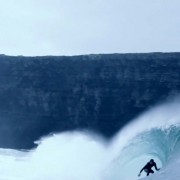Mind Mapping…
DESIGN THINKING
What is a map to you? Is it an old paper atlas used in grade school? Is it part of an application on your phone that loves telling you to make U-turns? Maps are much more than either of those representations. One of the oldest visual tools created by humans to make sense of the complexities of our world, maps are unique in their ability to synthesize data, convey meaning through spatial logic, and deliver information in high resolution. They are also incredible tools for communication, data sorting, and insight-finding in design thinking.
This was the premise of a recent pop-class at the d.school, ‘From Maps to Meaning’.
The class was a foray into the world of map-craft as it intersects with design and design thinking. Throughout the two weeks of the course students each built a map that fell into one of four categories: (1) Personal Geographies, (2) Invisible Made Visible, (3) Shifted Perspectives, or (4) Real Imaginary Mashup.
From Marcello Picchi’s participatory map inviting others to share the location of small lies told in everyday life to Sam McLaughlin’s three dimensional cut paper representation of his childhood fantasy world to Sheta Chatterjee’s subway-style map of her personal relationships at Stanford, the student maps were beautiful, insightful and inspirational.
As life designers, we are constantly mapping and organizing information to search for insight, opportunity, and story. In the same way that it takes time, patience, and careful decision making to synthesize from observation to design direction, building a map that’s laden with meaning but also visually stunning requires back and forth iteration at the intersection of the map’s morphology and its message.
The Beach House
El Medano
#Windsurf
#Kitesurf







Leave a Reply
Want to join the discussion?Feel free to contribute!